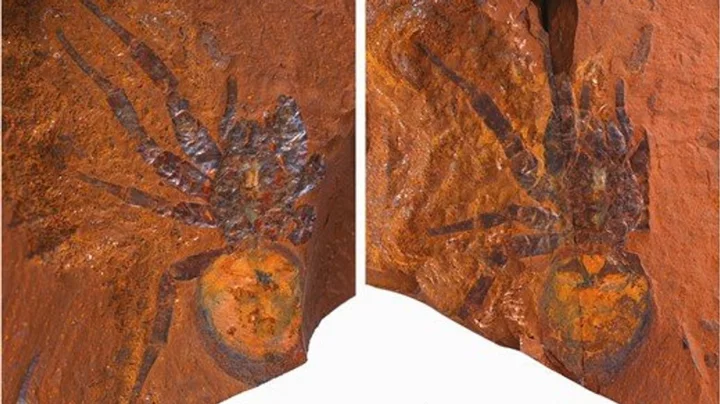
New language discovered in ancient Bronze Age ruins
Ancient clay tablets unearthed from ancient ruins in Turkey by archaeologists have revealed a language lost to the passages of time. The new language was discovered in the ancient capital of the Hittite Empire at Hattusa (known as Boğazköy-Hattusha). The well-preserved tablets are among many incredible artworks found at the site - a UNESCO World Heritage Site. Over the past four decades, researchers have dusted off nearly 30,000 unique tablets - with most written in Hittite. New research, however, shows that some of the tablet haul shows that they are written in a language previously unknown to modern man. Of course, the meaning and words of this language have not been deciphered, but it appears from early inspection to branch off from languages used within the Hittite Empire - and is being referred to as Kalašma. Interestingly though, researchers from the Istanbul Department of the German Archaeological Institute have noted that the new language is found within a recitation in a 'cultic ritual text'. While that's usually the basis of a middling horror movie, we're certain that there's nothing to worry about - it stems from an ancient Hittite practice. Professor Daniel Schwemer explains that the discovery wasn't unexpected. "The Hittites were uniquely interested in recording rituals in foreign languages," he said. These ritual texts provide insight into little-known languages, and thanks to this discovery, one more has been added to the list. Sign up for our free Indy100 weekly newsletter Have your say in our news democracy. Click the upvote icon at the top of the page to help raise this article through the indy100 rankings.
1970-01-01 08:00

Portland Timbers extend winning streak after 3-2 triumph over Colorado Rapids
Portland Timbers just keep on winning.
1970-01-01 08:00

Myles Garrett Causing a Delay of Game Simply By Existing Is Awesome
Myles Garrett was a one-man wrecking crew for the Cleveland Browns yesterday against the Tennessee Titans, racking up 3.5 sacks to the visiting team's three tot
1970-01-01 08:00

Chandrayaan-3 makes 'unexpected' discovery on the Moon
India’s Chandrayaan-3 lander only touched down on the Moon a month ago, but already it's made some major contributions to science. The spacecraft arrived on the satellite's unexplored south pole on 23 August, securing India's place as the first country to achieve this ambitious feat. Its rover, named Pragyan (or "wisdom" in Sanskrit) then embarked on an exploration of the rocky terrain, equipped with two instruments for conducting chemical experiments. And now, India's space agency, the ISRO, has published the ground-breaking data collected by the bold robot. Pragyan's findings offered a new, detailed insight into what makes up the lunar soil. And whilst scientists were unsurprised by the presence of iron, titanium, aluminium and calcium in the rocks, they were stunned to note a much higher concentration of sulphur than expected. The discovery is significant for a number of reasons. Most significantly, perhaps, because the sulphur could be used to help create a human base on the Moon. As Jeffrey Gillis-Davis, a planetary scientist, pointed out in a piece for Science Alert: "Astronauts and robots could travel from the south pole base to collect, process, store and use naturally occurring materials like sulfur on the Moon – a concept called in-situ resource utilization. "In-situ resource utilization means fewer trips back to Earth to get supplies and more time and energy spent exploring. Using sulfur as a resource, astronauts could build solar cells and batteries that use sulfur, mix up sulfur-based fertilizer and make sulfur-based concrete for construction." Gillis-Davis went on to explain that sulfur-based concrete has a number of advantages over the more common variety used in building, pointing out that it "hardens and becomes strong within hours rather than weeks, and it's more resistant to wear". "It also doesn't require water in the mixture, so astronauts could save their valuable water for drinking, crafting breathable oxygen and making rocket fuel," he added. The presence of sulphur near the Moon's south pole also suggests that highland soils at the lunar poles could have very different compositions to highland soils at the lunar equatorial regions. This would have key implications for our understanding of how the Moon works as a geological system, given that sulfur mainly comes from volcanic activity. Still, there's plenty of work to be done. And while this is all just one small step in Chandrayaan-3's mission, it could mean a great leap in how we view our dear celestial companion. Sign up for our free Indy100 weekly newsletter Have your say in our news democracy. Click the upvote icon at the top of the page to help raise this article through the indy100 rankings.
1970-01-01 08:00

Even Bill Belichick Getting In on the Taylor Swift-Travis Kelce Craze
Et tu, Billy?
1970-01-01 08:00

Scientists find 'giant' dinosaur spider fossil in Australia
If you thought Australia’s spiders were scary, wait until you see the prehistoric version. Scientists have found a fossilised giant trapdoor spider in New South Wales, only the fourth specimen of its kind to be found in Australia. The creature would have roamed and hunted in the surrounding areas which were once a lush rainforest, researchers said in a recently filed report. Last year, scientists unearthed fossils of the rainforest area from millions of years ago, teeming with specimens including plants, trapdoor spiders, giant cicadas and wasps. Now the area is a grassland region known as McGraths Flat. Researchers have named the spider fossil ‘Megamonodontium mccluskyi’. It would have lived in the Miocene period 11m to 16m years ago. “Only four spider fossils have ever been found throughout the whole continent, which has made it difficult for scientists to understand their evolutionary history,” said palaeontologist Matthew McCurry of the University of New South Wales and the Australian Museum. “That is why this discovery is so significant, it reveals new information about the extinction of spiders and fills a gap in our understanding of the past. “The closest living relative of this fossil now lives in wet forests in Singapore through to Papua New Guinea. “This suggests that the group once occupied similar environments in mainland Australia but have subsequently gone extinct as Australia became more arid.” The spider was found among many other Miocene fossils. In some of them, the fossils were so well preserved that subcellular structures could be made out. “Scanning electron microscopy allowed us to study minute details of the claws and setae on the spider's pedipalps, legs and the main body,” said virologist Michael Frese of the University of Canberra. The details meant scientists could confidently place it near the modern Monodontium, or trapdoor spider. However, it is five times larger than its modern day relatives. Megamonodontium mccluskyi's body is 23.31 millimetres long – that is just over an inch. The discovery of the species also tells us something of the past climate of Australia, the report added. The fact that it was found in a layer of rainforest sediment means the region was once much wetter than it is now. That could, in turn, help scientists understand how a warming climate has already altered the country’s life forms – and how it might change them again. "Not only is it the largest fossilized spider to be found in Australia but it is the first fossil of the family Barychelidae that has been found worldwide," said arachnologist Robert Raven of Queensland Museum. "There are around 300 species of brush-footed trapdoor spiders alive today, but they don't seem to become fossils very often. "This could be because they spend so much time inside burrows and so aren't in the right environment to be fossilized." The findings were published in the Zoological Journal of the Linnean Society. Sign up to our free Indy100 weekly newsletter Have your say in our news democracy. Click the upvote icon at the top of the page to help raise this article through the indy100 rankings.
1970-01-01 08:00

Keanu Reeves' girlfriend Alexandra Grant calls him an 'inspiration'
Keanu Reeves and Alexandra Grant appear to be a match made in creative heaven.
1970-01-01 08:00

Detroit Lions Mercifully End Kyle Brandt Mustache Era
Good Morning Football's Kyle Brandt vowed to sport a mustache until the Atlanta Falcons lost a meaningful game. It was a decision he made on his own volition af
1970-01-01 08:00

Ukraine claims commander of Russia's Black Sea Fleet was killed in Sevastopol attack
Ukraine has claimed that the commander of Russia's Black Sea Feet, Adm. Viktor Sokolov, was killed in its attack on Sevastopol on Friday.
1970-01-01 08:00

Consumers are still spending on nice things, if they're on trend
American consumers aren't tired of shopping. They're shopping more prudently, with an eye on getting the best value, sure. But they're also rewarding the stores that are betting big on the right trends at the right time, for the right price.
1970-01-01 08:00

Christy Turlington 'didn't know the words' to George Michael's Freedom!
Christy Turlington has revealed that she had a last-minute panic before she shot the 'Freedom!' music video.
1970-01-01 08:00

'Now, get over it!': Yuri Lowenthal is done talking about Peter Parker's facial changes
Yuri Lowenthal insists it wouldn't have mattered if he looked "like a goblin", his performance was "better".
1970-01-01 08:00
